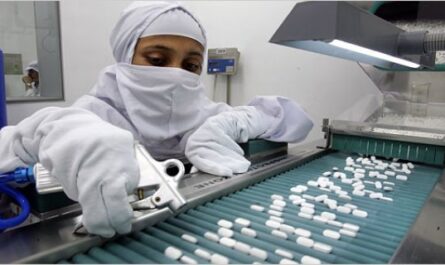The Evolution of Compounding to Meet Patient Needs
Over the past few decades, compounding pharmacies have played an increasingly vital role in providing customized medication formulations for patients. Traditional drug manufacturing focuses on mass-producing generic versions of FDA-approved drugs. However, this one-size-fits-all approach does not work for all patients due to allergies, dosing problems, or other special clinical needs. Compounding pharmacies fill this important niche by preparing medications tailored to the specific requirements of individual prescriptions from physicians.
Initially, most compounding involved creating capsules, creams, and other non-injectable dosage forms. But as medical science advanced, there became a greater need for customized injectable medications that could not be met through traditional manufacturing alone. U.S. Injectable Compounding Pharmacy rose to this challenge, developing sterile environments and rigorous quality control processes to safely produce intravenous solutions, implants, and other sterile injectable compounds on a prescription-by-prescription basis.
Quality Standards and Regulations Catch Up
As the demand for high-quality injectable compounds grew, it became clear that enforceable quality standards were necessary to ensure patient safety. A series of tragic medication errors and outbreaks caused by contaminated injectables in the 1990s and early 2000s exposed gaps in oversight and accountability. This led to increased scrutiny of compounding practices from regulators like the FDA. However, some felt existing laws did not provide the proper framework to regulate this unique sector balancing access and safety.
In 2013, a major fungal meningitis outbreak linked to contaminated injectable steroids from a compounding pharmacy galvanized reform. Over 60 people died as the impacts rippled nationwide. It highlighted the potential consequences of lax safety practices in facilities mass-producing compounds intended for multiple patients without prescriptions. Congress responded swiftly by passing the Drug Quality and Security Act in 2014. This established a clear regulatory framework and set baseline standards tailored specifically for large-scale injectable compounding pharmacy practices.
Growth and Specialization of Injectable Compounding
With improved regulations supporting quality assurance, U.S. injectable compounding pharmacy market have continued growing to serve evolving patient and provider needs. In recent years, many have built state-of-the-art cleanroom facilities and invested heavily in personnel training. Specialization has also increased, with pharmacies developing unique areas of drug expertise.
Some focus primarily on creating hard-to-find sterile medications for cancer, autoimmune conditions, or other chronic illnesses. Others concentrate on hospital-based IV therapies, pre-filled syringes, or other formulations geared toward convenient clinical administration. Anesthesia compounders prepare crucial mixes for surgeries and procedures. Many also provide specialty services like prenatal nutrition therapies or patient-specific implant dosing.
Compounding pharmacies partner closely with providers to empower clinical decision making. Their flexible capabilities allow formulating medicine options not readily available through standard manufacturers. This enhances care teams’ ability to tailor treatments optimally. As scientific advances spawn new specialized therapies, injectable compounders stand ready to develop corresponding customized drug delivery systems benefiting patients.
Ensuring High Standards Through Rigorous Processes
While regulations establish minimum quality thresholds, top compounders go above and beyond compliance. They implement comprehensive quality management programs continuously assessing performance to prevent issues proactively.
All aspects of operations receive meticulous control and documentation. Raw materials undergo multiple inspections to confirm identity, purity, and potency. High-efficiency particulate air cleanrooms maintain sterile work zones at highly regulated ISO class levels better than many hospitals.
Experienced pharmacists and technicians receive robust initial and ongoing training far surpassing minimum requirements. They strictly follow validated compounding procedures and conduct independent double checks at critical stages to catch any potential errors.
Comprehensive validations prove processes effectively remove microbes and particles. Ongoing environmental and personnel monitoring helps uncover issues early. Third-party audits provide independent scrutiny. Final product testing confirms sterility and potency meet demanding specifications.
Comprehensive batch records and traceability systems rigorously track every ingredient and instrument used in each order. This facilitates easy recalls if ever necessary and builds a culture of continuous self-improvement. Such intensive quality focuses allow these facilities reliably delivering high-purity, thoroughly tested injectable medications time after time.
As pharmaceutical innovation and individualized treatments continue gaining momentum, customized injectable compounding will play an ever more instrumental role in patient care. Collaborating closely with physicians, these specialty pharmacies perform a vital service by tailoring viable therapy options that might otherwise be unavailable for many conditions.
So long as regulatory oversight concurrently strengthens to reinforce consistent safety and quality assurance, the future appears bright for this evolving sector. Advanced compounders will likely further refine specialty areas while facilitating cutting-edge developments. And through stringent processes ensuring sterility and potency, they will reliably empower healthcare professionals caring for those in greatest need. Overall, injectable compounding pharmacies exemplify responsiveness in meeting patients where conventional options fall short through personalized medicine manufactured to the highest standards.
About Author - Money Singh
Money Singh is a seasoned content writer with over four years of experience in the market research sector. Her expertise spans various industries, including food and beverages, biotechnology, chemicals and materials, defense and aerospace, consumer goods, etc. LinkedIn Profile



